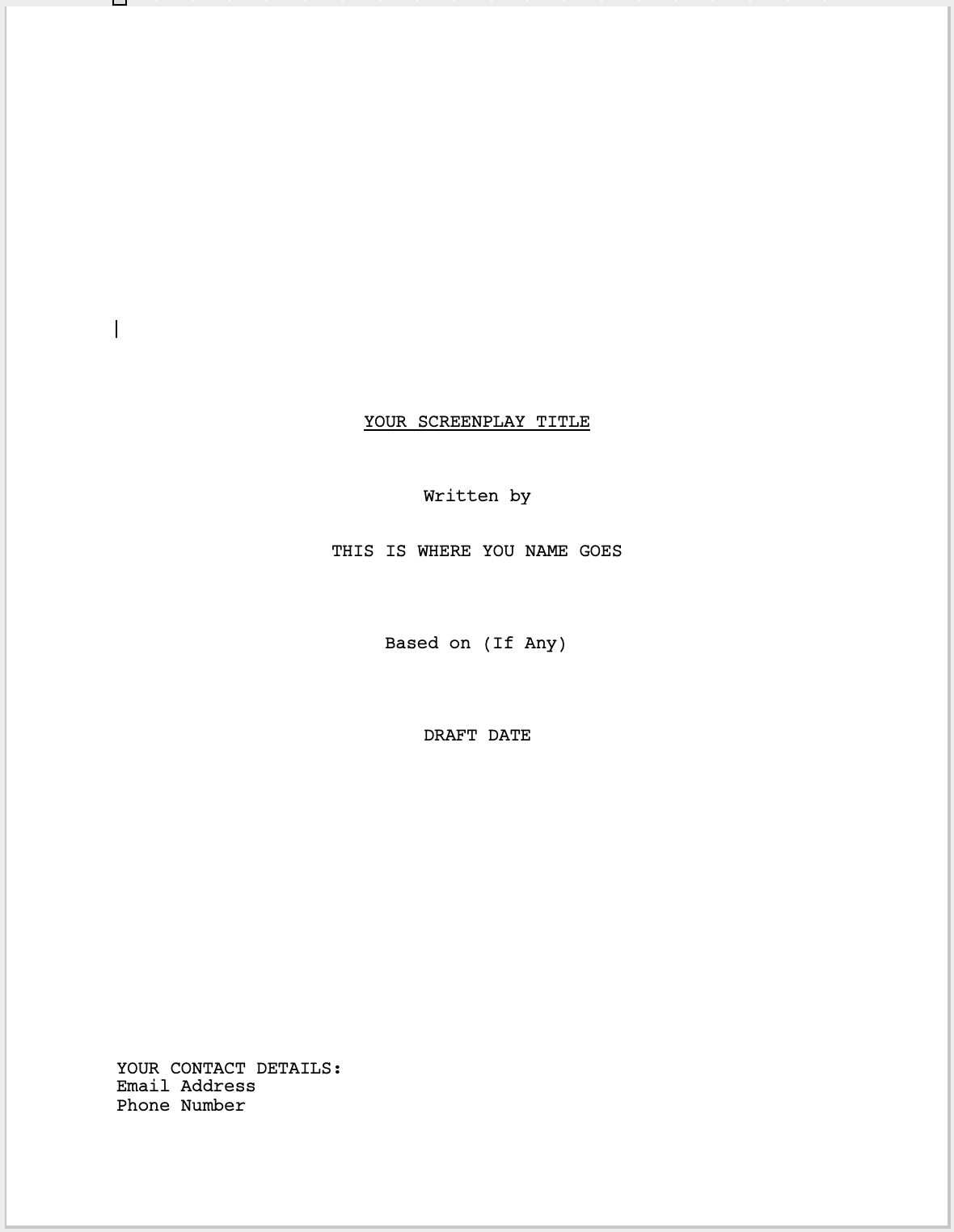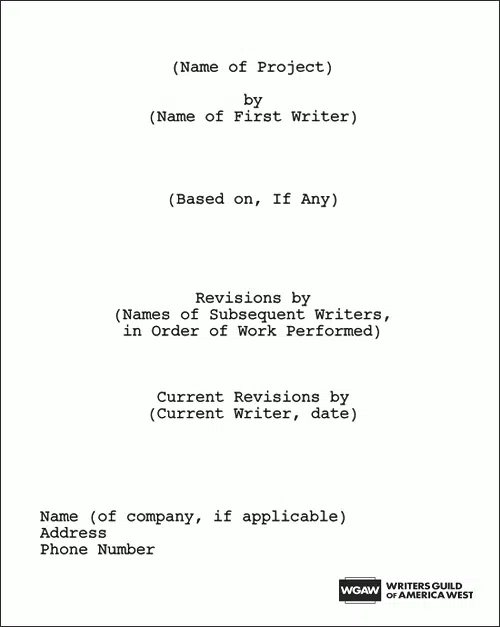
If you're going to hand your script in, you want to make sure the title page is formatted correctly.
One of the most important aspects of getting your screenplay into the right hands is to have a title page that doesn't completely bump them from the start. That means a title page that's formatted correctly, with the information displayed where it should be.
It sounds easy, because it is easy. Stop trying to complicate it. I want to keep this article short. Today I want to go over the proper title page format for your script and make sure you've got it right.
Let's dive in.
Screenplay Title Page Format
Your screenwriting software should make it easy for you to format the title page. Most title pages use standard Courier 12-point font. Remember, the secret to all of this is just being simple and easy to read. There are only four things that should be on the title page of your script:
- The script title
- Your name
- The draft's date
- Your contact details
Check out this example I made below.

Here's a little expansion on the date—you probably only need this to keep track of the drafts you send out. Most specs get sent without a date, so they always feel fresh.
As you can see, if your script is based on anything—a book, a fairy tale, your life, a news article, a video game, etc., then you put that on there too. But I am assuming most of you will be focusing on original ideas for now.
You might want to replace the TITLE with a graphic that shows the title. That's fine, just make sure it is centered and doesn't take away room for the other information we need.
What If There Are Other Writers?
To answer this question, we consulted the WGA handbook on the matter. Let's go through possible credits one by one and detail them.
Side note: Over here you can learn about adaptations.
Story By
A common misconception of "Story by" is that it refers to the person who came up with the idea. Not quite...
What it actually means is that anyone who worked on a treatment or any other story outline is entitled to credit for the story.
You may also get this credit if you're hired to do a page one rewrite that gets you sole "Screenplay by" credit, despite the initial writer having written a complete script. The first writer on an original screenplay is entitled to a shared "Story by" credit.
That bylaw is called the "Irreducible Story Minimum."
Screen Story by
If a writer gave some ideas and allowed other people to use those ideas as a jumping-off point for the actual screenplay, then they are entitled to "screen story by" credit.
But—that only comes via arbitration, which we will cover later.
If that writer and their springboard idea were from a publication, they may receive credit as follows "Based on an X PROPERTY BY." An example of this would be "Based on an article by So and So."
Screenplay By
This credit goes to writers who physically wrote drafts or scenes that are included in the final version of the movie. "Screenplay by" can only be shared by three people or three teams of people.
That idea of "teams of people" is where you might run into those jam-packed writing credits sections.
Written By
This is used when writers are entitled to both "Screenplay by" and "Story by" credit. This does not apply to adaptations or any screenplay with source material, but that does not count newspapers, articles, or biographies.
As a rule, "Written by" will not be shared by more than two writers.
The ampersand (&) vs. "and"
If the word "and" is found in between the names of two or three different screenwriters, that credit identifies the two or three different writers attached to the project during separate drafts.
The ampersand "&" means that the names are a writing team.
If you are formatting the title page after a rewrite...
Let's say you are hired to rewrite someone else's script. How can you edit the title page to reflect that?
Well, you add a section called "Current Revisions By," like you see in the example below. You will want to date those revisions. If there were revisions previous to yours, they go under "Revisions by" and in the order they were done.

Other things you might want to include...
If you want to add a picture, some graphics, maybe glitter... just don't.
I know some people like pictures, but I just find that they can distract from the narrative. If your picture sucks, it might give people the wrong impression, or maybe it doesn't set the right tone for what is to come.
If you want to add a quote that does not go on the title page, it goes on the "ii" page that comes after the title page.
Maybe you have a WGA registration number or a copyright number. You can add that above or below your email and phone number. Just make sure it's in a corner and out of the way.
I will say this, you never need to add these numbers—if you have registered, that's good enough. People do not need to know, and it does not have to be on the title page.
Okay... I think that's everything.
That's it. Seriously.
If you have questions, feel free to put them in the comments.
Your Comment